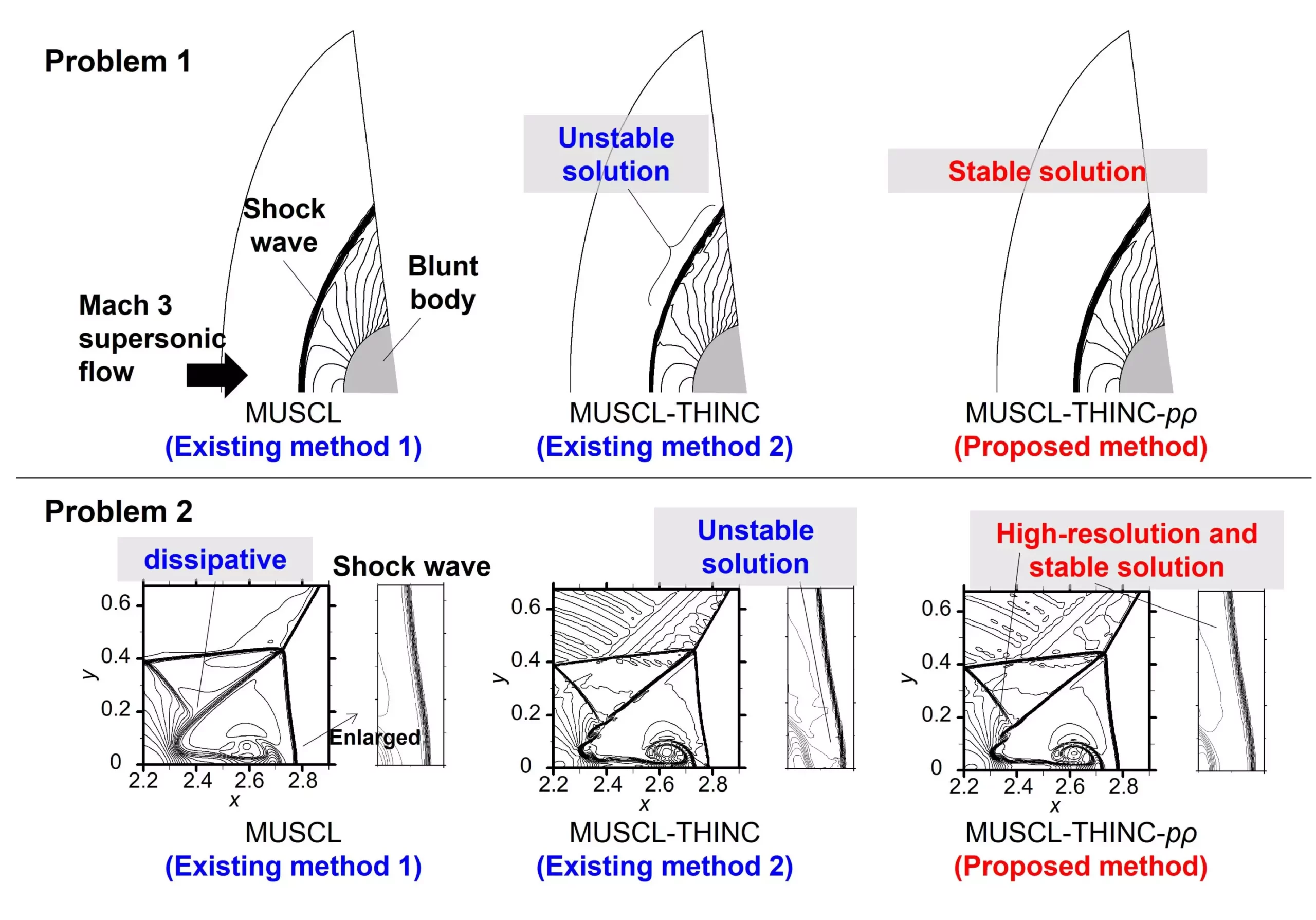Fluid dynamics has long been plagued by the complexities that arise in compressible flow simulations, where gases undergo significant changes in density. Scientists worldwide continuously strive to develop methods that not only improve accuracy but also maintain efficiency. A recent breakthrough by a team from Yokohama National University introduces the T-MUSCL scheme—a hybrid model that holds promise for both steady and unsteady single-phase compressible flow simulations. This innovative approach builds on the established framework of monotonic upstream-centered schemes for conservation laws (MUSCL), aiming to fill the crucial gap between academic theories and engineering practices.
The Need for Innovation in Fluid Simulation
Complex fluid phenomena, such as shock waves and discontinuities, pose significant hurdles for traditional numerical methods. The widely-used MUSCL method, while effective in many scenarios, often succumbs to excessive numerical dissipation, especially during intricate flow simulations that demand precision. As scientists push the boundaries of understanding compressible flows in fields ranging from aerospace to mechanical engineering, the call for methods that deliver high-resolution, stable, and accurate simulations grows louder.
Keiichi Kitamura, an associate professor at Yokohama National University, casts light on this challenge: “Despite progress in method development, a chasm remains between intricate academic approaches and those reliable enough for engineering application.” The T-MUSCL scheme represents a direct response to this challenge, offering a balance that simplifies complex calculations yet remains functionally robust.
Unveiling T-MUSCL: A Hybrid Innovation
The T-MUSCL scheme combines the strengths of the conventional MUSCL method with the tangential hyperbolic interface capturing (THINC) technique, leading to a novel approach that can adeptly navigate varying levels of nonlinearity and discontinuity. By optimizing these variables, the researchers have crafted a scheme that can proficiently address both weak and strong shock waves. This capacity for nuanced handling of flow dynamics is what sets T-MUSCL apart, making it a comprehensive tool for various engineering challenges.
Two critical parameters underlie this innovative scheme: the nonlinearity-weighted parameter and the slope-ratio-weighted parameter. These parameters allow T-MUSCL to capture the behavior of even the faintest shock waves with improved accuracy, while conventional methods often falter. In scenarios involving steady two-dimensional blunt body problems, T-MUSCL demonstrates enhanced convergence behavior, diminishing previously unstable numerical results associated with strong shocks.
A Practical Solution for Real-World Applications
What distinguishes T-MUSCL is not just its mathematical sophistication but also its ease of implementation within existing frameworks. The method provides a seamless alternative to conventional MUSCL without burdening engineers with unwieldy complexity. This feature is vital for practitioners who seek reliable tools without the overhead of cumbersome adaptations.
According to Kitamura, “The punchline of the paper is that we obtained high-resolution and robust results for complex compressible flows using simple expressions.” The appeal lies in its accessibility, allowing a broader range of researchers and engineers to adopt this promising technology in their workflows.
Future Directions and Industry Impact
The research team is not resting on their laurels; they have ambitious plans to apply the T-MUSCL method to practical engineering problems. This forward-thinking mindset aims to further unravel the intricacies of compressible flow dynamics and shock wave behavior. The ultimate goal is to enhance understanding and foster innovation across industries such as aerospace and mechanical engineering.
As Gaku Fukushima, a researcher from the project team, notes, “Our method aims to deepen our understanding of compressible flow dynamics and contribute to technological advancements.” The hope is that T-MUSCL will serve as a foundational tool for researchers embarking on fluid dynamics studies, ultimately paving the way for transformative developments across various sectors.
The introduction of the T-MUSCL method signifies a critical advancement in the field of fluid dynamics, bridging the gap between theoretical development and practical application. It not only promises to improve the accuracy of compressible flow simulations but also supports a next-generation approach to solving complex engineering problems. As researchers and practitioners alike embrace these advancements, the impact on industry and technology may be profound, reshaping the future of fluid dynamics research.


Leave a Reply